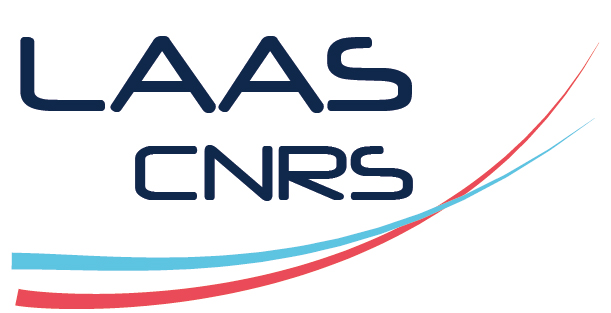Table Handling Task in Collaboration with a Human and a Humanoid Robot
Transport de charges homme-robot
Résumé
To improve human-robot collaborations, more and more researches focus on the study of human behaviour. It is in this context of growing relationships between robotics and biomechanics that theCollaBorative roBot (CoBot) project has emerged. Funded by the French Agence Nationale de la Recherche (ANR), this project (ANR-CoBot) targets a human-humanoid robot collaboration in the context of a load-carriage task. During this collaboration, the robot is aimed to safely and pro-actively assist its human partner to handle a load. The idea of the ANR-CoBot project is, first, to understand the mechanisms at stake during a human-human collaboration and, then, to model and simulate them to finally implement them on a humanoid robot TALOS from PAL Robotics to perform the same task with a human partner.As part of this project, my PhD deals with the transition from the modelling of the human behaviourto the integration of this model in a humanoid robot. The final goal of this thesis is to perform a pro-active human-robot interaction to carry a table. From a biomechanics point of view, my thesis aims to better understand human locomotion in order to enable the robot to anticipate its partner’s behaviour. To achieve this goal, experiments were performed to measure Center of Mass (CoM) human trajectories, first during simple locomotion and then during carriage task. Then, models based on optimal control problems were designed to generate human-like trajectories or even predict them. This prediction may improve the human-robot interactions making the robot acting pro-actively. Then, from a robotics point of view, to achieve a collaborative carriage task, five matters need to be handled:• Localization: the robot needs to locate the table and its human partner in order to interactwith them.• Walk generation: the robot needs to walk toward the table at the beginning of theexperiment and also needs to walk with the table towards an unknown location chosenby its human partner.• Whole-body control: the robot needs to lift the table and handle it while walking.• Balance: the robot should not fall during the experiment.• Safety: the robot should not harm its human partner.Among those matters, my thesis mainly focuses on the walk generation. The other topics are handled by other members of the Gepetto team in LAAS-CNRS. One major contribution of my thesis is to embed the prediction trajectory model into the robot walking pattern generator. This aims to improve the human-robot interaction for two main reasons. First, it may allow the robot to be more reactive by anticipating its partner motions and, then, it may make the interaction less disturbing and more natural for the human as the robot may act in a human-like manner.
Ma thèse est financée par l’Agence Nationale de la Recherche (ANR) à travers le projet intitulé ANR-CoBot. Ce projet pluri-disciplinaire a pour but d’étudier les interactions entre 2 individus lors d’un transport de charges collaboratif et de réaliser une collaboration homme-robot pour transporter une charge. Dans le cadre de ce projet, ma thèse s’intéresse spécifiquement à la réalisation d’un transport de table en collaboration entre un humain et un robot de type TALOS produit par l’entreprise PAL Robotics.Lorsqu’on s’intéresse à une telle interaction homme-robot, les deux principaux enjeux à relever sont les suivants : comprendre le comportement de l’humain, d’une part, et contrôler le robot pour qu’il puisse adapter ses actions à celles de son partenaire humain d’autre part. Le premier enjeu est d’ordre biomécanique, tandis que le second est d’ordre robotique. Ma thèse allie donc ces deux disciplines. En biomécanique, mon travail s’est focalisé sur l’étude des trajectoires de Centre de Masse (CdM) d’individus marchant seuls sans contraintes puis marchant en transportant une table en binôme. Le but de cette étude est de modéliser ces trajectoires de marche avec un problème de contrôle optimal afin de pouvoir prédire où va un individu à partir de sa trajectoire passée. Cette information est nécessaire pour réaliser une interaction homme-robot fluide où le robot arrive à anticiper le comportement de son partenaire lors du transport, comme le ferait un être humain. En robotique, cinq aspects sont à maîtriser afin de réaliser un transport de charge :• La localisation: le robot doit pouvoir « voir » la table et son partenaire pour pouvoir interagir avec eux.• La génération de la marche : le robot doit pouvoir marcher jusqu’à l’endroit où l’humain veut amener la table, endroit qui est a priori inconnu au robot.• Le contrôle corps-complet : le robot doit pouvoir soulever la table et marcher en la tenant.• La stabilisation : le robot doit pouvoir réaliser tous ces mouvements sans perdre l’équilibre.• La sécurité : le robot ne doit pas mettre en danger l’intégrité physique de son partenaire humain.Parmi ces différents aspects, ma thèse se focalise sur la génération de la marche tandis que les autres points font l’objet de travail d’autres gens au sein de l’équipe Gepetto du LAAS-CNRS. Lors d’une interaction homme-robot, la génération des trajectoires du CdM du robot et de ses pieds doit être rapide et doit prend en compte les mouvements de l’humain en temps réel. Ainsi, ma principale contribution au générateur de marche du robot, lors de ma thèse, a été de le coupler au modèle de prédiction des trajectoires humaines.
Origine : Version validée par le jury (STAR)

